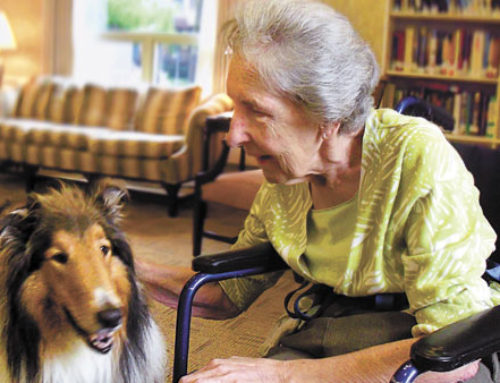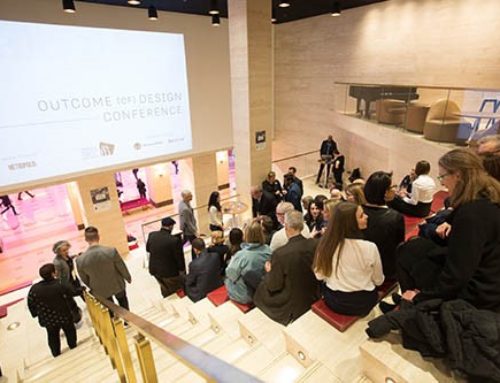Asbury Place in Kingsport Tennessee
The Vision Group Studios collaborated with Dr. Jane L. Nichols of Western Carolina University on a Pre-Post Occupancy Evaluation study at Asbury Place, a Continuing Care Retirement Community in Kingsport, Tennessee. The purpose of the research was to determine if and how modifications to the living environment impact resident, family and staff behavior as well as resident health and wellness.
Purpose of the study
Vision Design Group Studios intends to collaborate with Dr. Jane L. Nichols of Western Carolina University on a Pre-Post Occupancy Evaluation study at Asbury Place, an
Assisted Living facility in Kingsport, Tennessee.
The purpose of the investigation is to determine if and how modifications to the living
environment impact resident, family and staff behavior and resident health and wellness.
A Main Street renovation-expansion is planned. Our hypothesis is:
By creating an engaging environment that enables and encourages greater resident
independence, increases opportunities for social interaction and expands stimulating
activities, residents’ perception of quality of life will improve, residents will take a more
active role in maintaining their physical and intellectual health, and they may rely less on
staff to assist them in daily activities. If family members feel more welcome and positive
about visiting, they are likely to remain more connected and involved.
An additional outcome we predict is a stronger organizational culture of health-care teams,
in which the residents and their families take a more active part in resident wellness
maintenance, working in tandem with staff-teams. Currently, the culture that exists is one of
resident-patient ‘consumer’ and healthcare-worker ‘provider’, in a sort of ‘pay-for-service’
model. Care costs are rising, the current model is inefficient, and it contributes to a negative
milieu of stratification, sense of entitlement and poor relations between residents and staff.
Significance of the study
The Main Street environmental modification-intervention planned is both costly and
disruptive to community residents and their daily routines. Without measurable benefits,
these types of building improvements are merely aesthetic exercises. Main Street additions
are taking place and in planning stages for many assisted living facilities across the nation.
It is critical to determine if these interventions benefit residents, families and/or staff.
Additionally, as the U.S. population of elderly rapidly grows, the number of trained and
qualified healthcare providers is shrinking, and this is even truer for healthcare workers
caring for the elderly. The elderly and the old-old (85+ years of age) can be challenging
patients, and may require a great deal of assistance. It is imperative that we find ways of
co-caring that reduce the burden on medical costs, offsetting the care to the individual and
family members. Creating environments that are conducive to sustaining independent
behavior and encourage family involvement may be part of the solution. A built
environment that supports these goals would be considered a valuable public and private
investment, and be a positive response to the population surge in the elderly and old-old.
Methodology and framework
To determine if there are changes to attitudes, behavior and/or health and wellness
maintenance, we intend to use a multiple methods approach. Assumptions based on the
research include:
Perceptions of quality of life are rated higher when people are socially active
A person who actively pursues good health and wellness maintenance tends to
remain healthier longer and experiences fewer conditions of co-morbidity
The environment-behavior link impacts human health and activity, and
“environmental press” is a key factor in maintaining self independence
Persons that actively seek mental and intellectual stimulation appear to maintain
greater cognitive function as they age
Social interaction can reduce a sense of loneliness, abandonment and uselessness
People engaged in their immediate and wider communities feel more connected to
life and to society
A personal outlook of altruism and “giving back” is indicative of mature emotional
development, an objective of “successful aging”
Community engagement and opportunities for volunteering provide a sense of
accomplishment and reward, and may contribute to “legacy-building”
“Successful aging” in incumbent upon positively adapting to the aging process
Family members that are present and feel part of the resident community contribute
positively to the health and wellness of the resident member and the associates
Methods (See Addendum)
Pre-Construction Intervention
1. Gather baseline measurements to determine activities, behaviors, attitudes and
perceptions of residents, family members and healthcare staff. Nursing staff associates will
track the use of specific spaces and resident activities, including:
Wellness Center visits, Salon visits, Visits from family members, Volunteering, Computer
use and Meals eaten alone or with others. Pre-construction tracking will occur over the
course of three months
2. Conduct focus groups with small groups of residents, family members, and healthcare
associates
3. Survey residents, seeking a minimum of 50 responses
Post-Construction Intervention
1. Gather measurements to determine change in activities, behaviors, attitudes and
perceptions of residents, family members and healthcare staff. Nursing staff associates will
track the use of specific spaces and resident activities, including:
Wellness Center visits, Salon visits, Visits from family members, Volunteering, Computer
use and Meals eaten along or with others. Post-construction monitoring will occur over the
course of two months. Compare pre-construction and post-construction measurements.
2. Conduct focus groups with small groups of residents, family members, healthcare
associates
3. Survey residents, seeking a minimum of 50 responses
All group responses will be transcribed and coded to preserve anonyminity. Surveys will be
anonymous, and turned in to the reception desk in a letter tray. Each resident will receive
one survey to complete at their leisure within one week. Consent forms will be presented to
each participant. We will attempt to randomly invite resident and family members to the
pre-construction focus groups, however, they will self-select. It has not been determined if
we will invite the same or new participants to the post-construction focus groups.
Analysis
Qualitative data gathered through focus group activities will be analyzed two ways: First,
we will develop categories of words and phrases for content and search for patterns of
responses based on similarities (content analysis). Second, we will use poignant responses
as direct quotes in the summary of the data and conclusive report.
Quantitative data from baseline comparison metrics and from surveys will be analyzed
statistically (exact method to be determined later; ANOVAs or other).
Dissemination
Our intention is to share the study evidence with assisted living facility builders, operators
and regulators, through white papers and other periodicals. We will also submit
manuscripts to scholarly journals, such as: Generations, The Journal on Active Aging,
Research on Aging, Journal of Interior Design, Journal of Aging and Social Policy, and/or
others. The study and results will also be presented at academic and professional
conferences. Finally, we will submit the study findings to the AARP Journal.




